Geology Quiz - End Term GCI Extra Credit, GEOLOGY 1, Spring 2024
VerifiedAdded on 2023/03/21
|5
|809
|87
Quiz and Exam
AI Summary
This document provides solutions to a geology quiz, likely for an introductory course. The quiz covers a wide range of fundamental geology concepts, including the formation of the Earth, the use of radioactive isotopes, erosion rates, the definition of tectonic plates, causes of earthquakes, the effects of volcanic eruptions on temperature, mountain formation, ocean wave causes, continental drift, earthquake and volcano relationships, groundwater, ocean basins, the age of the Earth, glaciers, the Earth's magnetic field, the early Earth's surface, the presence of life on early Earth, the Earth's interior, plate movement, the nature of rocks and minerals, and a concluding bibliography of relevant sources. This comprehensive coverage indicates a focus on core geological principles and processes.
1 out of 5
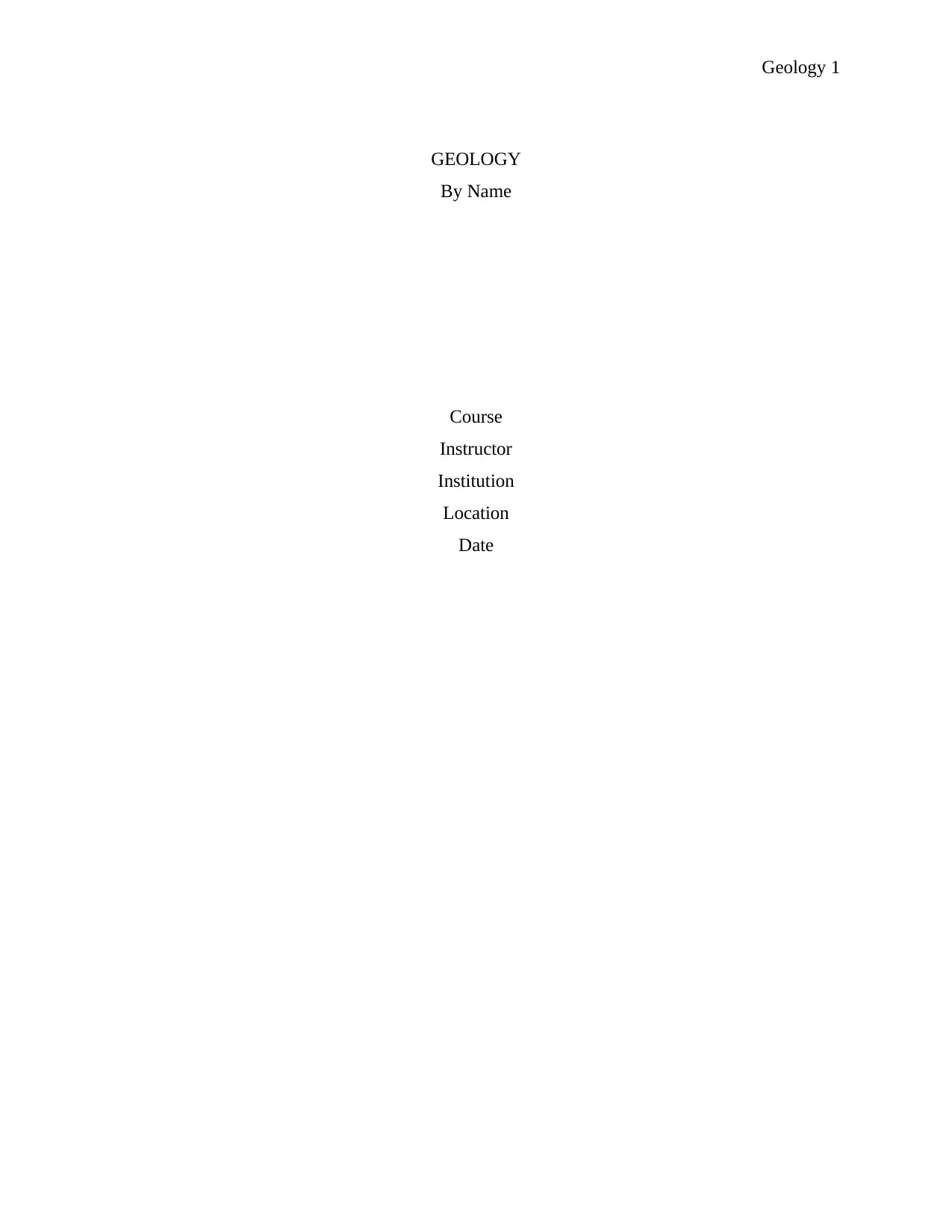
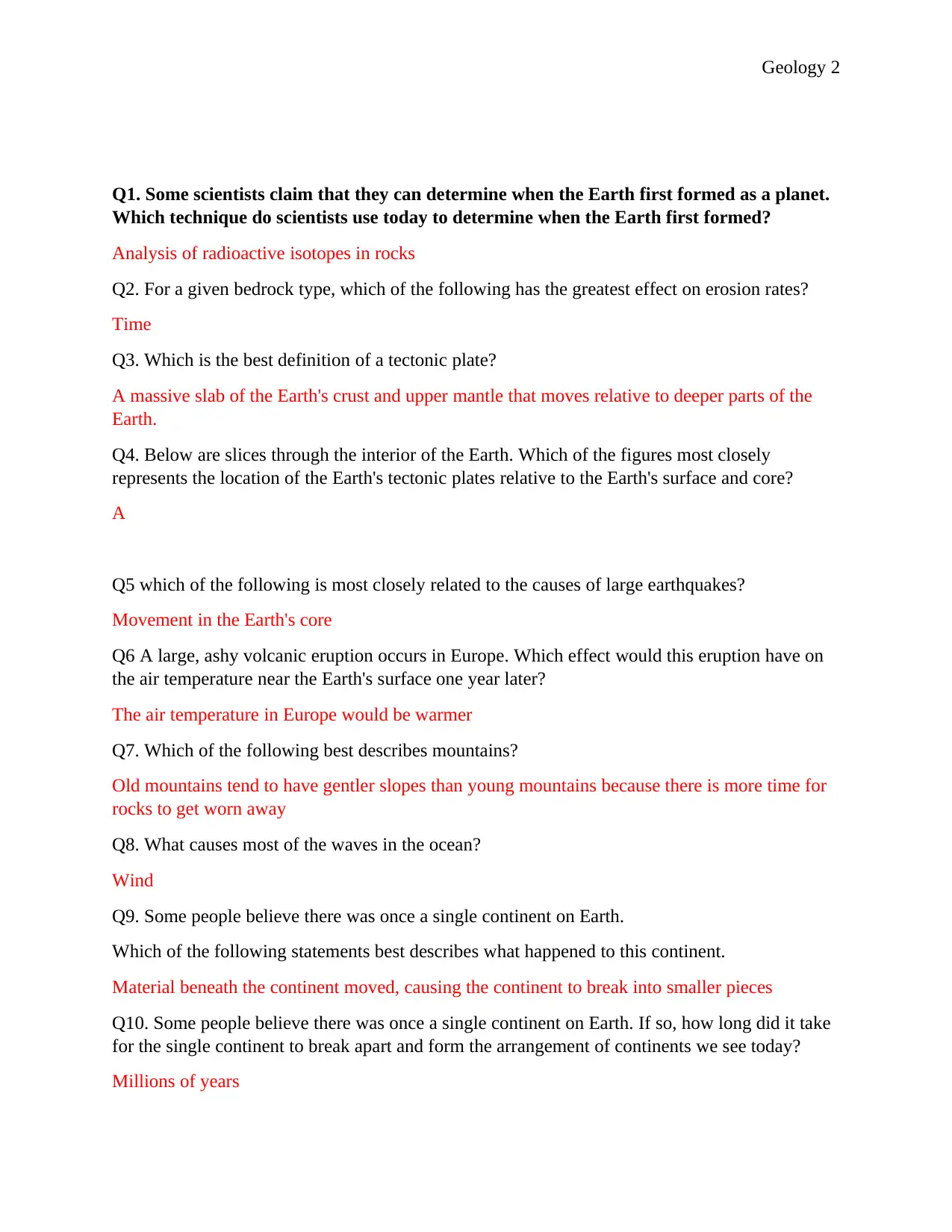
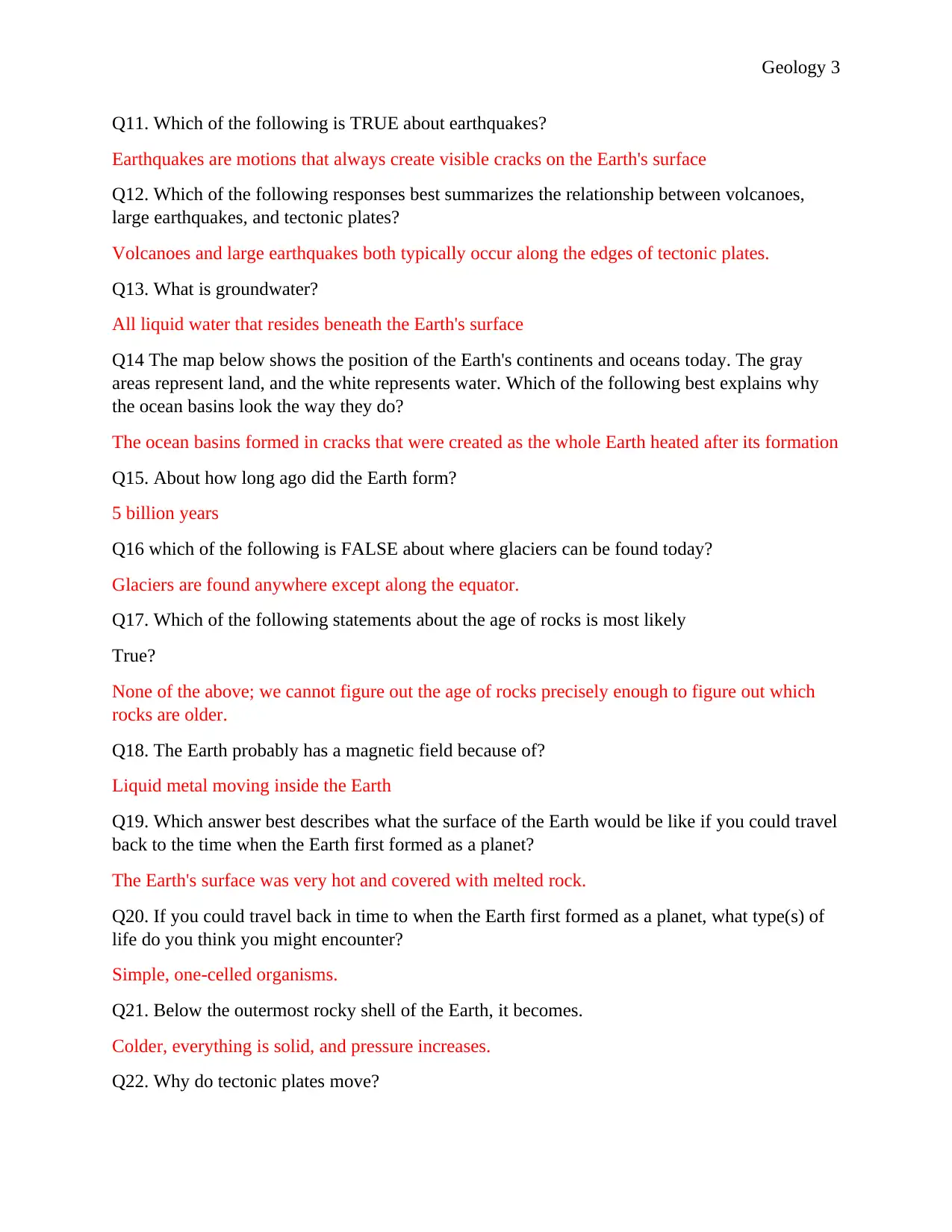

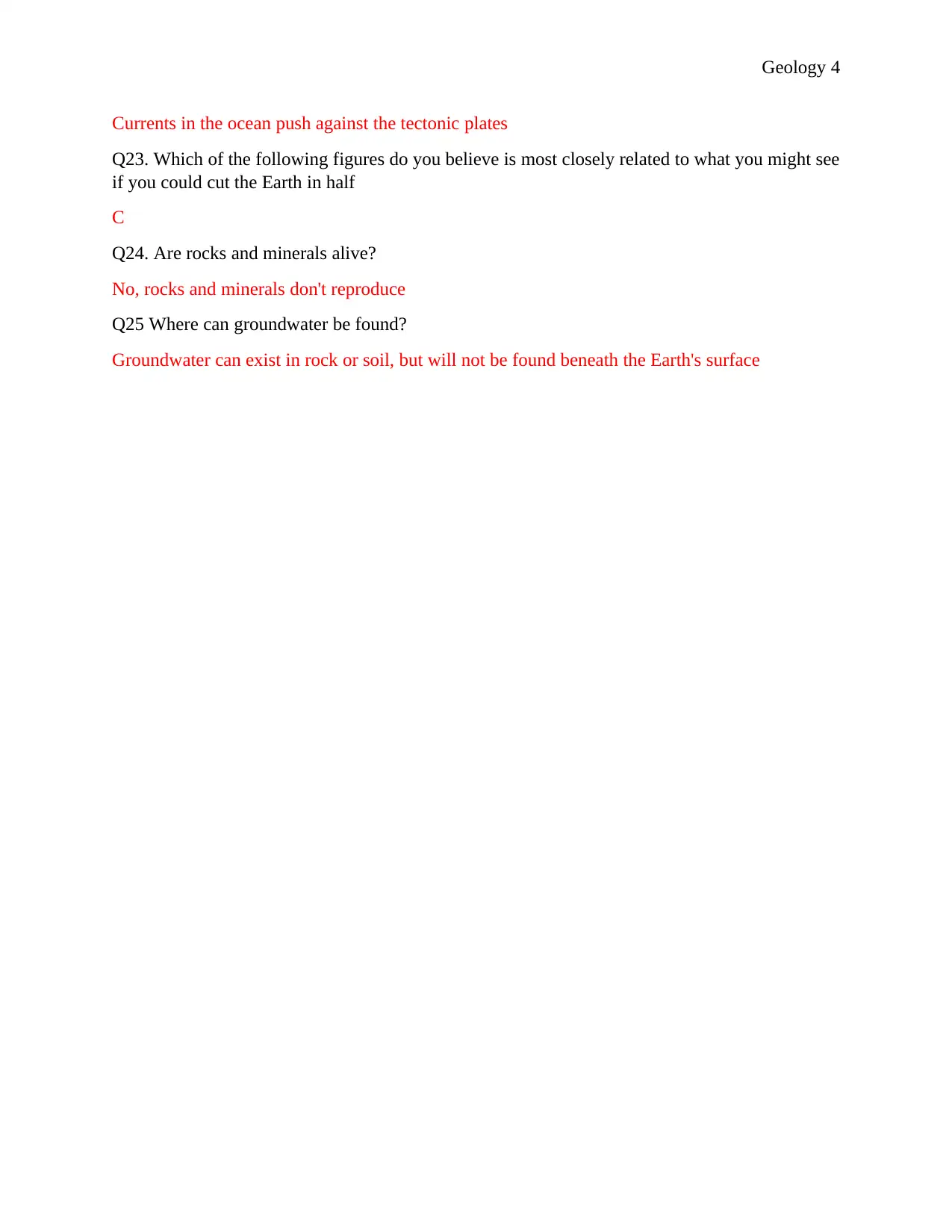
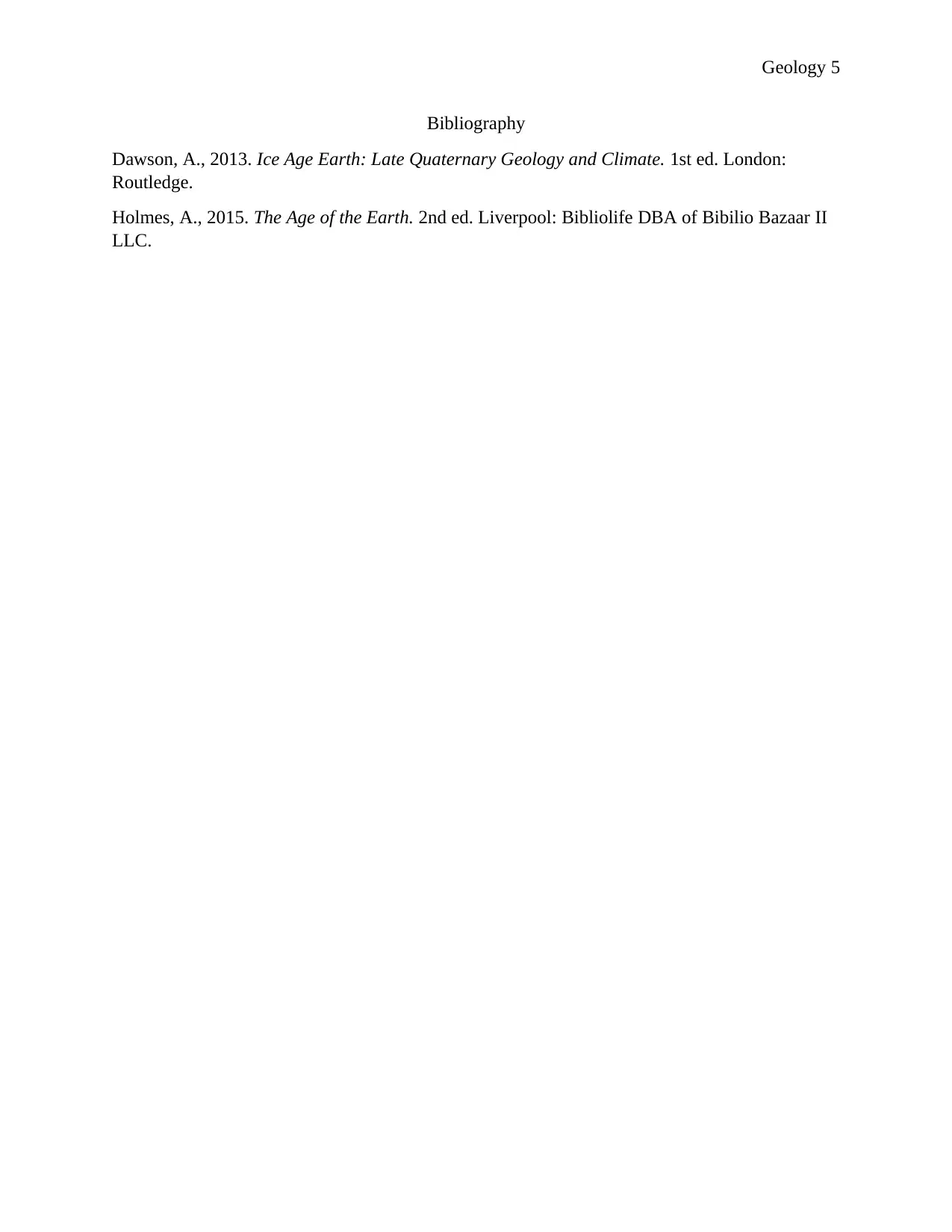


![[object Object]](/_next/static/media/star-bottom.7253800d.svg)